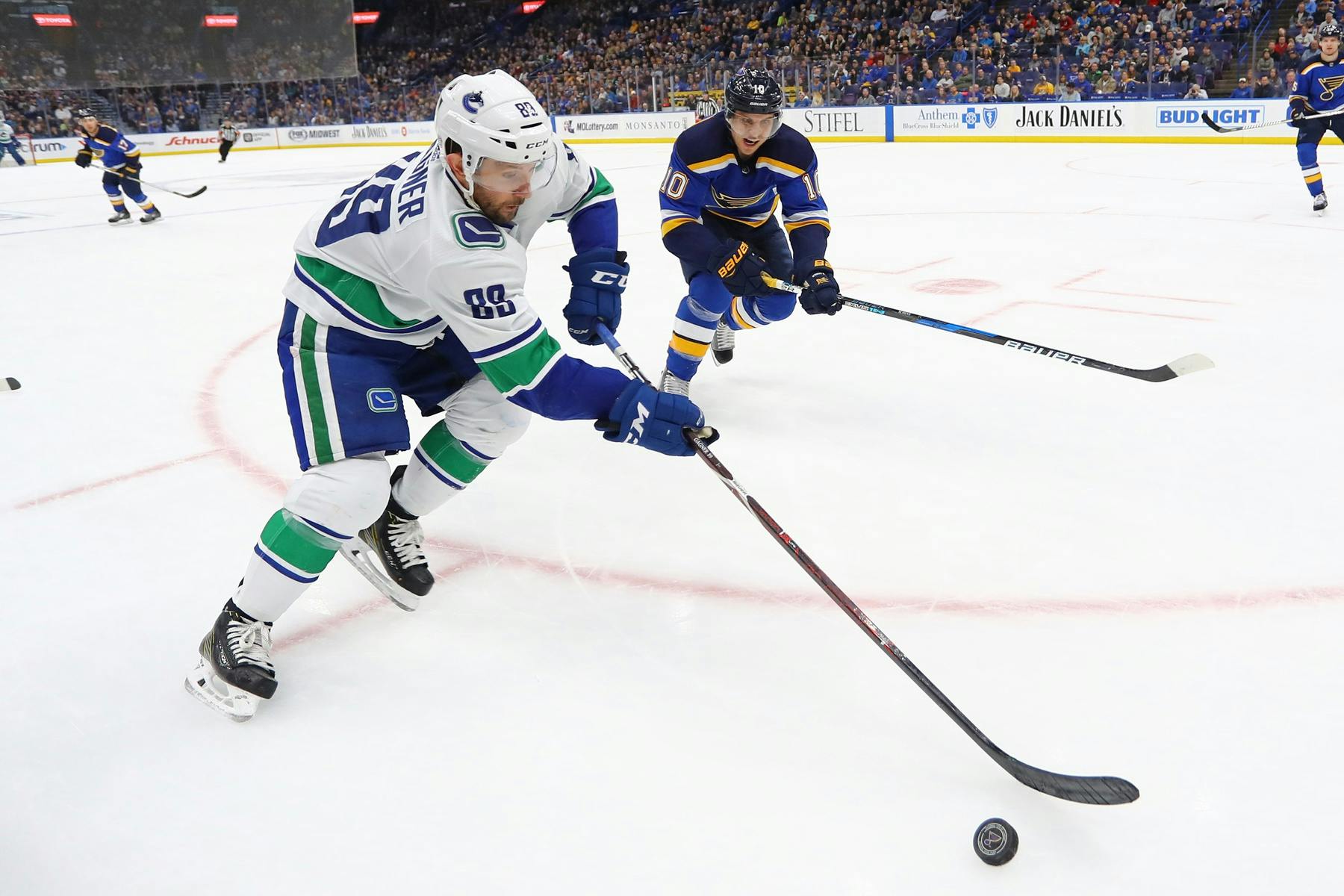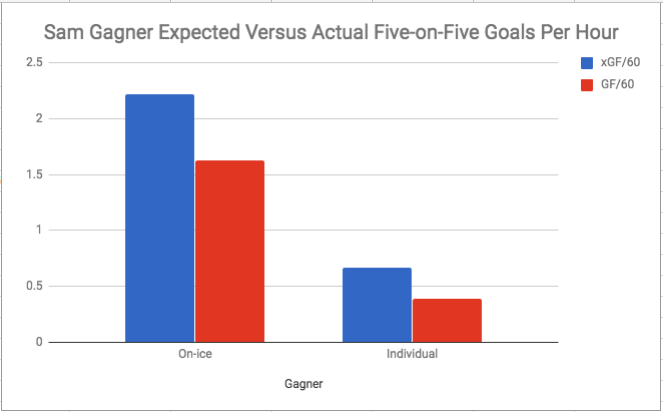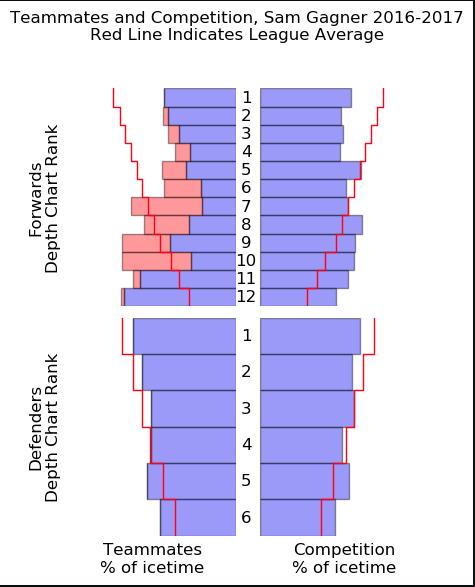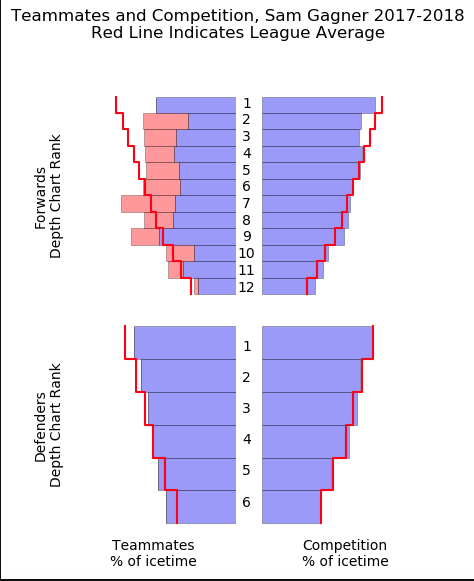Canucks Army Year in Review: Sam Gagner

By Harman Dayal
6 years agoThere’s something to be said about avoiding free agents coming off of banner years — a harsh lesson that the Vancouver Canucks have learned in consecutive off-seasons.
Loui Eriksson is the most prominent example of this, but the most recent one would be Sam Gagner.
The 28-year-old forward was coming off of a career-high 50 point season with the Columbus Blue Jackets when Vancouver inked him to a three-year deal worth 9.45 million dollars.
Gagner has failed to bring that same offensive production to the Canucks, registering just 31 points in 74 games — a career-low if you discount Gagner’s injury-riddled 2015-16 season. The underwhelming results weren’t for a lack of opportunity either.

Graph courtesy Sean Tierney
Gagner’s struggles were particularly apparent at 5-on-5 where his 1.04 points per hour ranked 13th among Canucks’ forwards and 335th among 389 forwards league-wide(minimum 400 minutes TOI). He wasn’t as effective on the man advantage either, collecting just seven primary points compared to 14 last season.
Never the greatest two-way player, it shouldn’t come as a surprise that Gagner underperformed defensively as well.

Goaltending can’t be used as a scapegoat for the poor on-ice goal differential either since Markstrom, and Nilsson combined for a five-on-five save percentage just two ticks below the .921 team average with Gagner deployed.
This lacklustre performance trickled down on his most common linemates, with the majority faring better without Gagner on the ice.

One area where luck may have played a part was with Gagner’s middling counting stats, many of which appear to have been hurt by below average individual and on-ice shooting percentages.
Gagner’s personal shooting percentage of 6.1% was more than three percent below his career norm, while his 5.1% on-ice conversion rate ranked him bottom-five among Canucks’ forwards. The results of these below-average rates were reflected when comparing expected goal totals to the results.

Gagner’s individual expected goals mark has him scoring four more five-on-five goals for the season than the six he actually tallied. The caveat is that Corsica’s expected goals model doesn’t accurately account for finishing ability — part of the reason why we see above average converters like Boeser, Horvat, and Baertschi with goal totals above their calculated marks. The question to ask then is whether Gagner’s mediocre results relative to his expected totals are driven by unfortunate luck or poor finishing ability. As is the case with most of these situations, the truth likely lies somewhere in the middle.
Even still, Gagner’s expected goals for rates aren’t all that impressive- it’s just fair to point out that he likely deserved a better fate with the few scoring opportunities that he and his linemates created.
Unfavourable Circumstances
It was a disappointing season for Gagner, but the circumstances around him are also partially to blame.
In Columbus, Gagner was used in a well-defined role that suited his strengths while mitigating his defensive weakness. That meant slotting in on the right wing of a scoring fourth line at five-on-five and skating on the top powerplay unit. That line was able to feast on lesser competition in limited even-strength minutes.
This year, injuries and a lack of scoring depth caused Gagner’s role to fluctuate throughout the year to fit in line with the team’s needs. That meant a slight uptick in even-strength, but more importantly, tougher quality of competition.


Injuries to Bo Horvat and Brandon Sutter also forced Gagner, whose better suited for the wing, to play up the middle as the de facto second-line centre during parts of the season. He had the luxury of playing alongside Boeser during much of this stretch, but it’s certainly not a role that Gagner should be expected to play.
The experiments continued on the man advantage, where Gagner spent a large portion of the season manning the point.
Gagner’s creativity, vision, and soft hands make him a much better option as the setup man in the slot of a 1-3-1 formation compared to the point.
Conclusion
Sam Gagner’s had a mediocre start to his Canucks’ tenure; underwhelming both on the powerplay, and to a greater extent, at even-strength. Looking forward, Gagner will have to rely on more suitable deployment and some puck luck to help orchestrate a modest comeback.
Recent articles from Harman Dayal





